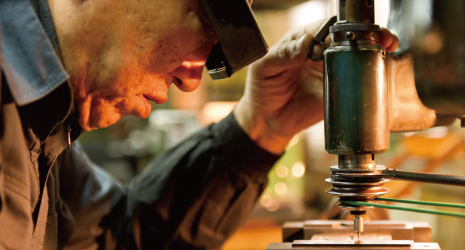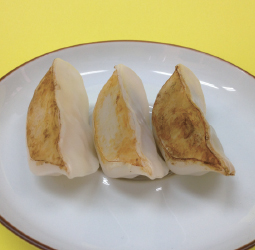Home > Highlighting JAPAN >Highlighting Japan April 2016>Science & Technology
Highlighting JAPAN


Fantastic Plastic
Syuto Inc. produces metal molds used to make plastic models for popular anime known around the world. While the company originally manufactured only the molds, it has now created fresh interest by developing unique products such as plastic models that produce no waste and replicas of gyoza (dumplings).
The eighties were a wildly popular time for plastic models in Japan. Most men in their thirties and forties here will remember spending time as a child building these replicas. Since the nineties, however, the popularity of model making has declined precipitously, leading to a growing population of kids who have never attempted the craft.
Even under these adverse circumstances, model manufacturer Syuto Inc. continues to invigorate the plastic model industry using technological prowess developed over the course of many years. Eschewing the use of nippers or adhesives, Japanese plastic models are made on the premise that the builder will do the assembling by hand, meaning the connectors holding the parts in place need to be just the right thickness so they can be separated with one’s fingers. Furthermore, fitting the parts together properly requires a tolerance level of a hundredth of a millimeter. And because metal molds expand, the amount of expansion must be calculated when shaving the molds down. Syuto’s master craftsmen can make those delicate modifications by hand, and their consummate skills have gained the enduring trust of many toy manufacturers over the years.
In addition to that artistry, the company was an early adopter of IT. Incorporating 3D-CAD designs and mockup testing using 3D printers were a few of the methods Syuto has used to lower costs and boost efficiency. Now Syuto is seeking to develop new avenues of business and rethink the value of plastic models.
“We’ve been making metal molds since our company was founded, but it has become difficult to do business producing only metal molds,” explains Representative Director and President Tadatoshi Shibata. “That’s why we decided to take on building plastic models from the design stage.”
Normally a toy manufacturer designs the prototype from which a metal mold is cast, but Syuto realized that since they were already designing metal molds in 3D-CAD, they could surely design plastic models as well. By capitalizing on their technology and experience, they saw that the ability to create everything from designs to metal molds could revitalize the company. They subsequently began to receive orders from manufacturing companies outside the toy industry that didn’t have plastic model designers on staff. The company also began crafting models for uses in totally unexpected and different industries, such as medical equipment, architectural models, movie props and more. Orders for novelty goods have been on the rise as well. Meanwhile, the company’s own plastic model gyoza (dumplings) have been a hot topic on the Internet.
What’s more, Syuto, wanting to add value to the models themselves, developed original plastic models that could be put to practical use after assembly. For example, they’ve made a pair of scissors shaped like a stag beetle that can be put together by combining simple parts. “When we distribute these models to kids at events, they really seem to have fun with them,” Shibata recalls, smiling at the memory. “It reinforces the feeling that we want children to enjoy plastic models.”
Another Syuto innovation has to do with the scaffolding for plastic model parts—called the “runner”—a portion that is normally discarded. Syuto, however, incorporates it into the assembly, making it integral to the completed model. The general public started to recognize the Syuto name thanks to the emergence of such ecologically friendly plastic models that generate no waste.
Shibata clearly states his desire to take on more challenges. “While plastic models based on anime and cars are currently the mainstream, there is new potential in genres such as novelty goods,” he says.
As an example of such endeavors, he explains that they have their sights trained on overseas development as well. While the firm has already been receiving orders from foreign manufacturers who rate Syuto’s technology highly, they now plan to be more proactive about entering overseas markets. Shibata spoke with high anticipation. “I hope we can provide opportunities for not only Japanese kids but for children all over the world to learn the joys of making plastic models.”
© 2009 Cabinet Office, Government of Japan







